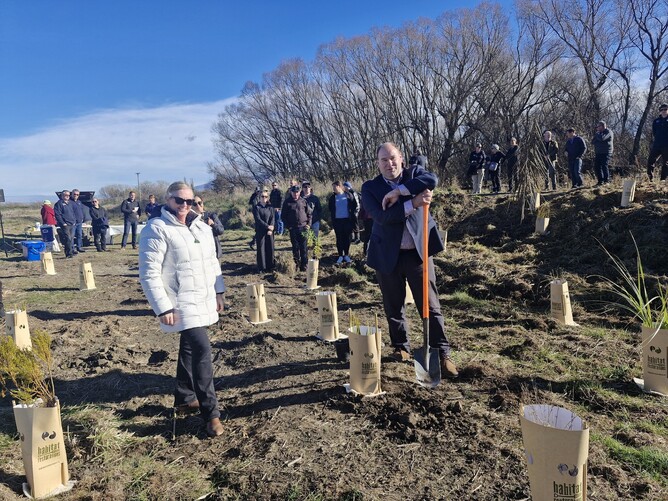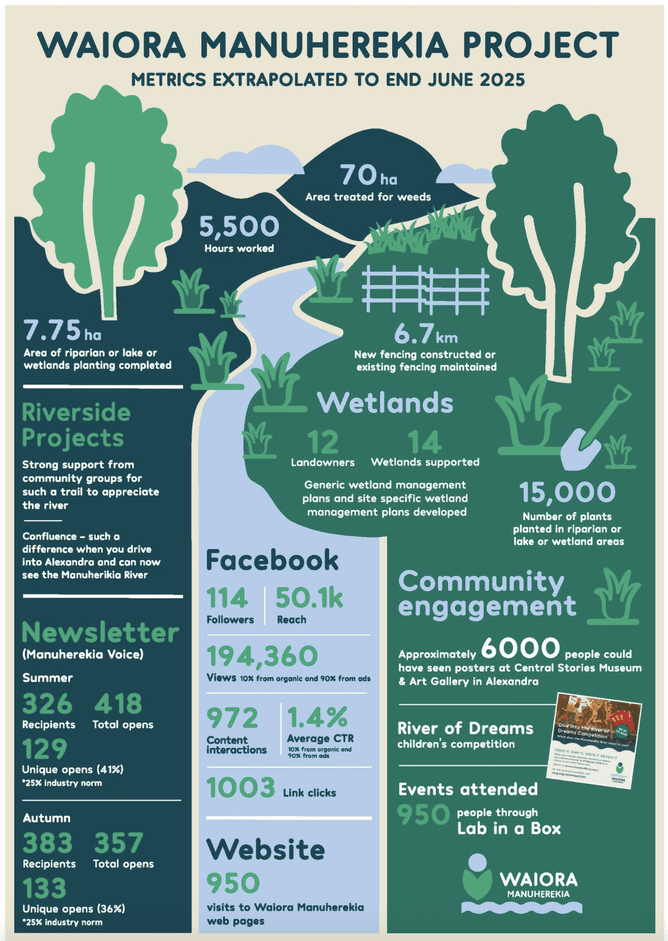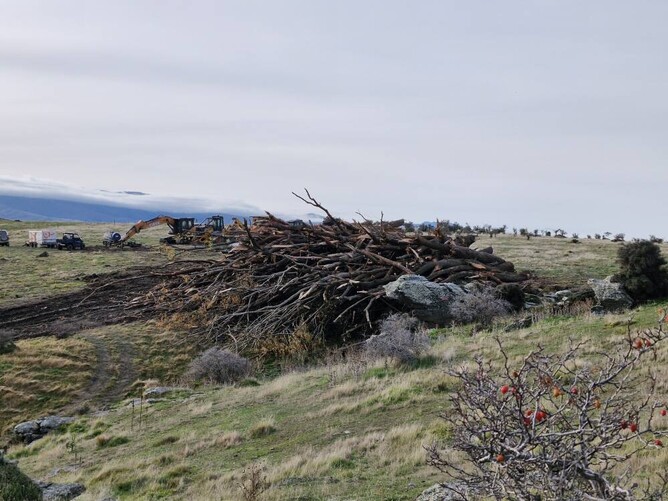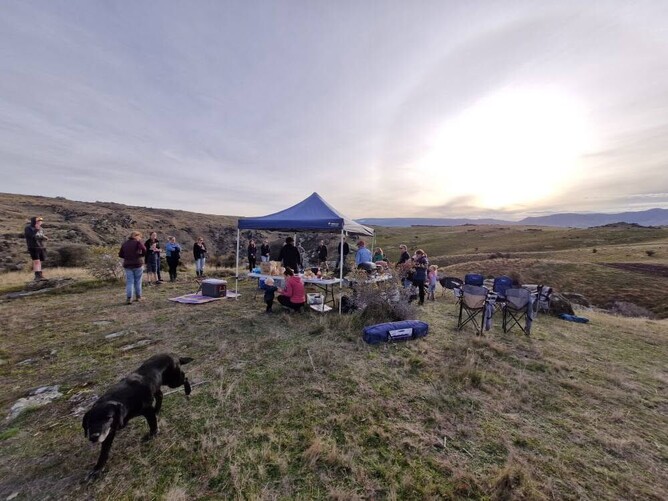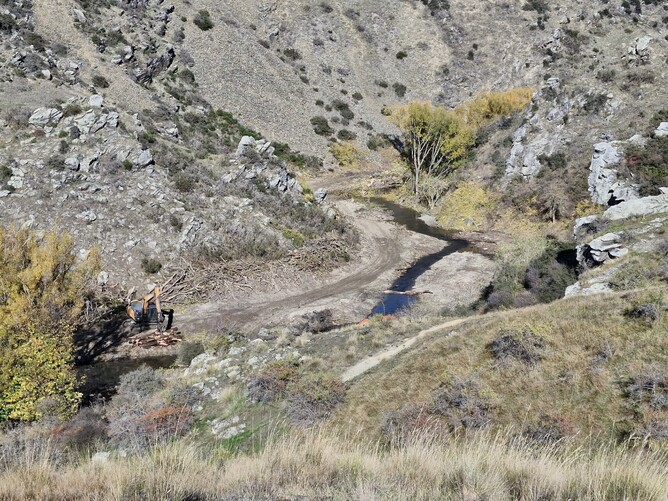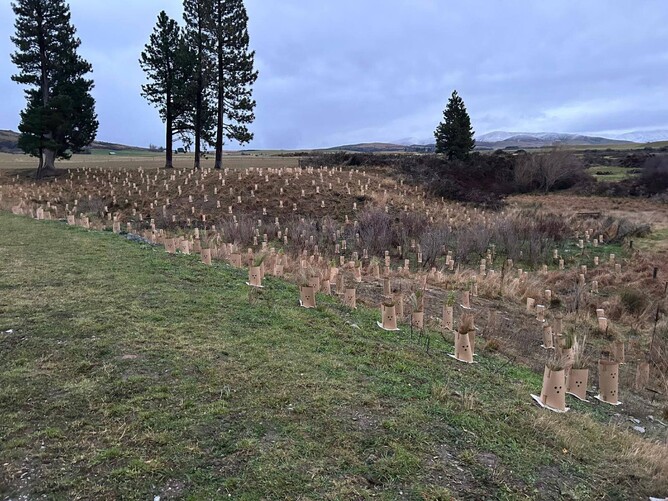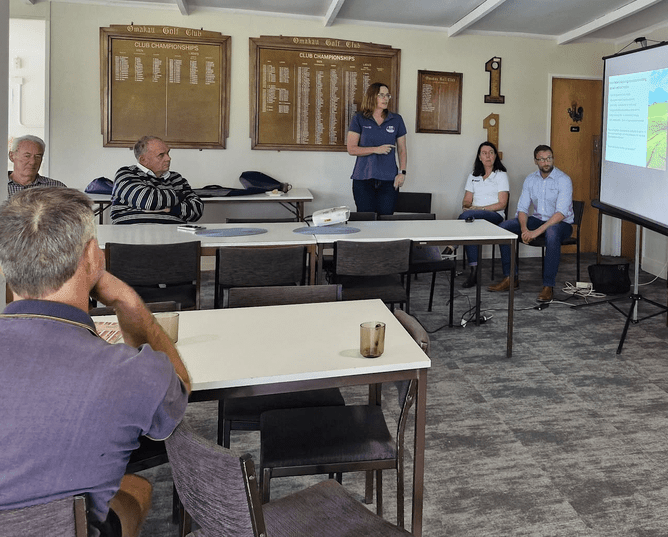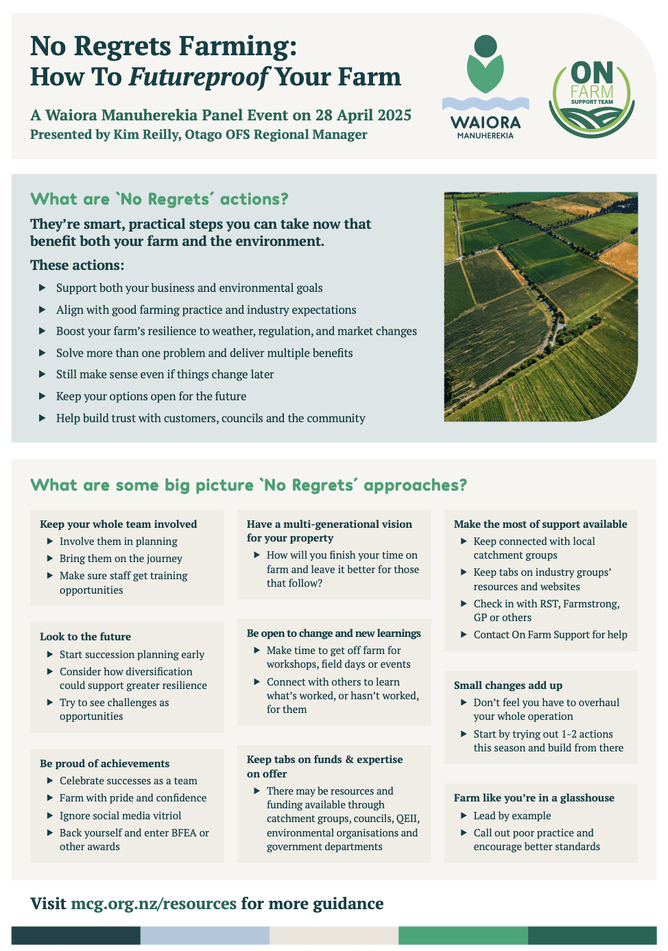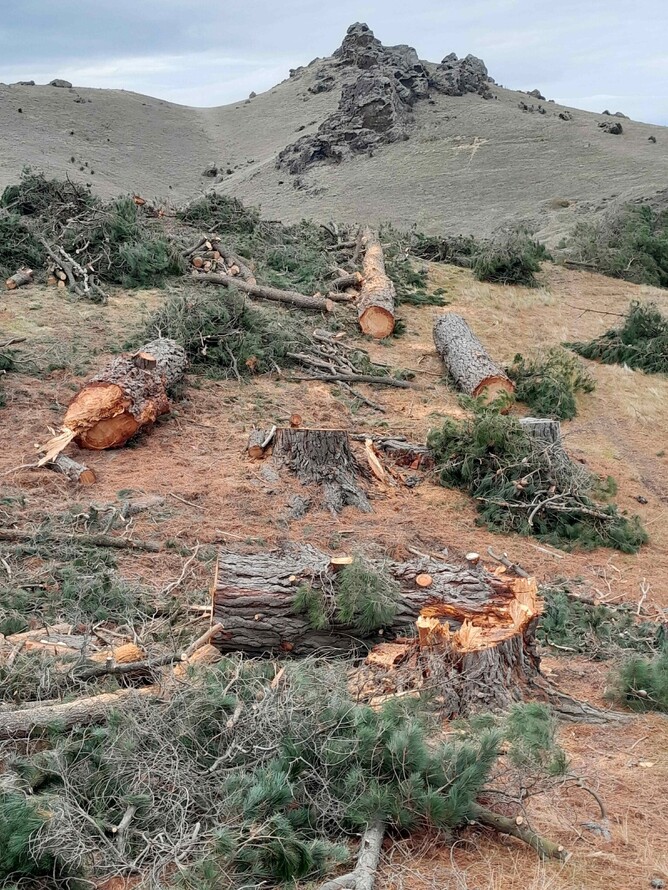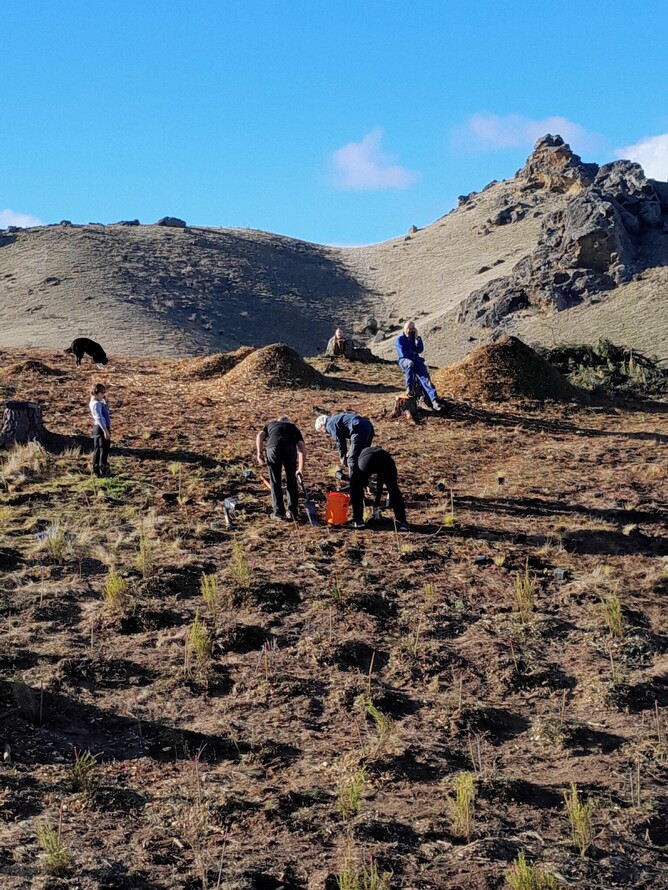Reflecting on Year One
It’s been a busy few months for the Waiora Manuherekia Project, with restoration work, community events, and plenty of behind-the-scenes planning all coming together to support a healthier catchment.
Launched in July last year with funding from the Ministry for the Environment, Waiora Manuherekia set out with an ambitious goal: to deliver a meaningful, community-led environmental project in just 12 months. That meant hitting the ground running, building partnerships, and getting people across the catchment involved from day one.
On 27 May, we gathered at the Lauder Rail Trail Bridge to celebrate one year of the Waiora Manuherekia Project, and what a turnout it was! We were pleased to have Hon. Andrew Hoggard, Minister for Biosecurity and Food Safety and Associate Minister for Agriculture and the Environment, join us on the day. He even rolled up his sleeves to plant a native tree, marking the occasion with a hands-on show of support.
Thanks to everyone who joined us to celebrate. We’re proud of what’s been achieved so far, and we’re excited to keep the momentum going into year two! We’ve completed all physical works, like willow removal and wetland restoration, and will be now putting our efforts into supporting freshwater improvements.
We’ve pulled together a brilliant infographic to highlight just how much has been achieved over the past year through our project. Check it out.
In a recent Otago Daily Times opinion piece, Clare Hadley, General Manager of the Manuherekia Catchment Group, reflected on the project’s progress and the power of community-led action. Read the full article here.
The Otago Daily Times and Central App also covered our recent one-year celebration event, where Hon. Andrew Hoggard helped mark the milestone. Check out the ODT article here and the Central App story here.
Willow Removal Update
Tackling invasive willows has been a key focus for the Waiora Manuherekia Project, and the results are already making a visible difference. While willows were once planted to stabilise riverbanks, many have now become a problem, blocking waterways, damaging river health, and crowding out native plants.
One of the highlights this season was our joint willow removal project through Poolburn Gorge, in partnership with the Ida Valley Catchment Group. On 16 April, we hosted a community open day and BBQ to showcase the work done so far and hear local ideas for the future of this stunning area.
Families joined us for a walk through the gorge, chatted with contractors, and enjoyed a well-earned sausage sizzle while soaking in the views. Seeing the gorge opened up again, free from willows, was a real reminder of what’s possible when we work together.
Learn more about the willow control project at mcg.org.nz/willow-management.
The next step in some areas is planting native vegetation to help bring these spaces back to life. Back in May, contractors safely burned the willow log piles near the Lauder Rail Trail bridge, to pave the way for new native vegetation to be planted, and to help create a more scenic and ecologically healthy area for the community and visitors to enjoy. You’ll also see plantings at Hills Creek (SH85).
New Wetland Taking Shape
Check out this beautiful new wetland restoration project at the upper end of the catchment!
The site has undergone willow and ground weed control, been fenced off from stock, and is now fully planted with native vegetation. It’s a fantastic example of what can be achieved with a bit of vision and commitment to restoration.
A huge thanks to landowner Jeremy Anderson for sharing this stunning photo.
No Regrets Farming
With change becoming the new normal, what are the actions you’ll never regret taking on your farm? That was the big question at our No Regrets Farming panel event on 28 April at Omakau Golf Club, where a strong local turnout came to hear from experts Karen Williams (Irrigation New Zealand), Kim Reilly (MPI) and David Cooper (DairyNZ).
The discussion focused on what farmers can do now, despite shifting regulations, markets and environmental challenges, to future-proof their businesses. Missed the workshop? No problem. You can download a helpful one-pager with key takeaways and actions to get started here.
Transformation at Lower Manorburn Reserve
We’re thrilled to share that the Lower Manorburn Reserve project is now complete - and what a transformation it’s been!
Led by the Lower Manorburn Reserve Working Group, the area known as ‘the island’ has gone from a pine-covered site to a thriving native planting zone, with 1,200 native plants now in the ground. More than 50 volunteers pitched in over several working bees, helping with tree slash clearing, fencing, planting, and mulching. It was a true community effort and a fantastic example of what’s possible with shared goals and local support.
Huge thanks to ORC’s ECO Fund and Contact Energy who funded this project alongside Waiora Manuherekia. This is a lasting legacy for the area. Check out the full article here.
